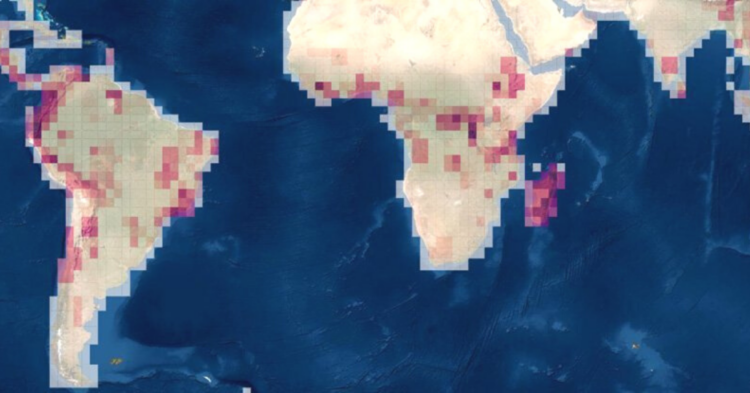Generally, when we think of maps, we think of images that show us known locations. But a new scientific effort has created a speculative map. It charts the areas where researchers expect undiscovered species are living today . It is hoped that this information can be used in conservation efforts.
We are losing species at an alarming rate.

We are currently in a biodiversity crisis. Current extinction rates are 1,700 times higher than before human existence. The direct cause of the rate of extinction is human action. Specifically, human land occupation has had devastating effects on local animal populations. It is a bigger cause of extinction than even climate change.
We actually do not know much about the species living today.

Most living species are currently undiscovered. It is estimated that we have only identified 13 to 18% of the living species on Earth. This new map was created because the researchers feared that we may lose the species before we discover them.
Science Alert reported that the researchers worry that, “Without inclusion in conservation decision-making and international commitments, these [undiscovered] species and their functions may be forever lost in ignorance.”
Some species are easier to find than others.

“We tend to discover the ‘obvious” first and the ‘obscure’ later,” Mario Moura, the lead author, explained in a statement . “We need more funding for taxonomists to find the remaining undiscovered species.”
For example, scientists cataloged emus, a large bird in Australia, in 1790 shortly after they first traveled to that area. However, we did not have scientific descriptions of Brachycephalus guarani , a small frog in Brazil, until 2012. Smaller elusive species are harder to find. Thus, it is suspected that there are currently many undiscovered amphibians to this day.
The map predicts where undiscovered species are likely.

Some types of animals are more elusive than others. They could be smaller in size, live in harder to access areas, or have small geographical ranges. But there are biological, environmental, and sociological factors that are associated with such elusive animals.
For example, known large animals are unlikely to have cousins we do not know about. But small animals that have evaded us for some time are likely to have many genetic relatives that are similarly evasive. The map pinpoints the likely hotspots where we will find them.
The map has already identified places of interest.

Brazil, Indonesia, Madagascar, and Colombia are expected to be full of undiscovered creatures. These places have moist broadleaf tropical forests, which are associated with elusive animals. By highlighting the potential for discovery in these areas, researchers hope it will encourage investment in researching these environments. We must invest in discovering the biodiversity of these areas before these discoveries are lost forever.
h/t: Science Alert

















































